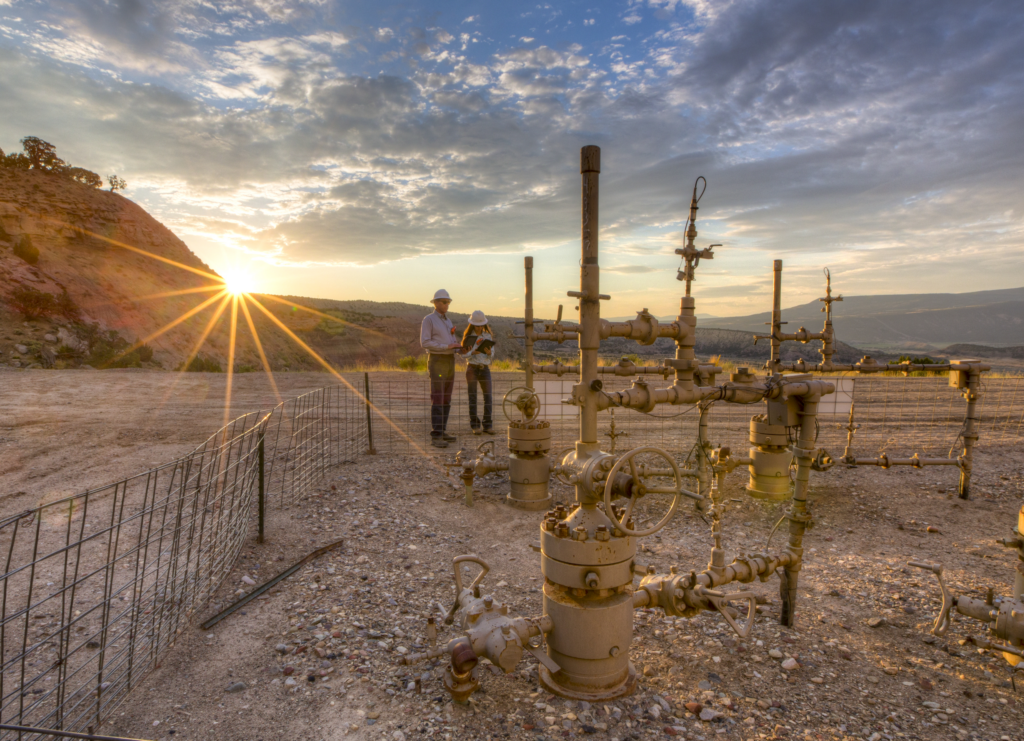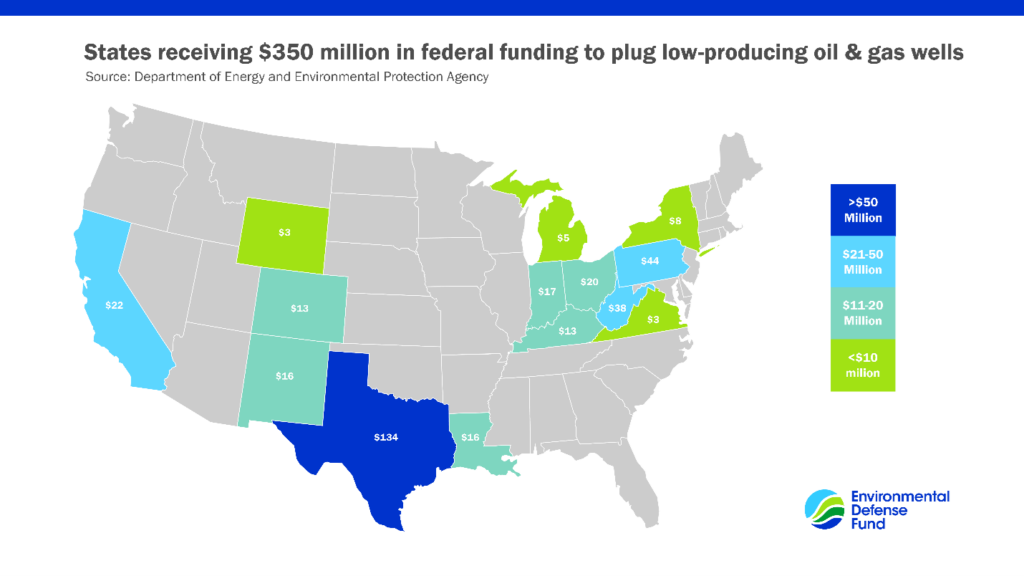Unpacking the Biden administration’s announcement of $850 million to tackle oil and gas methane emissions
By Grace Smith and Elizabeth Lieberknecht
The Biden administration just made another major investment in a cleaner, safer energy future for all Americans. On Friday, EPA and the Department of Energy announced applications are open for $850 million in funding to monitor and reduce methane emissions from the oil and gas sector.
The funding was authorized by Congress through the Inflation Reduction Act’s Methane Emissions Reduction Program, which provides a total of $1.5 billion in funding for methane mitigation and measurement. The funding is a major investment to help communities, industry and states implement the recently finalized EPA methane rules and to improve data collection on methane pollution across US oil and gas production and transmission.
Unpacking the Biden Administration’s Announcement of $850 Million to Tackle Oil and Gas Methane Emissions Share on XApplicants will apply for grants to implement projects under one of three areas of interest , or AOI, with applications due August 26th. In alignment with the Justice40 Initiative, all projects will need to ensure that 40 percent of benefits go to disadvantaged communities and will be required to submit a community benefits plan.
Reducing emissions at existing and marginal conventional wells
The first AOI is a big one, encompassing three kinds of projects: one project that would receive $300 million to reduce emissions at marginal conventional wells, categorized as producing less than 15 Barrels of Oil Equivalent per Day, a project that would receive $200 million to reduce emissions at existing wells producing between 15 BOED and 40 BOED, and one that would receive $50 million to reduce emissions at existing wells on Tribal lands. The first two projects are required to mitigate emissions at wells owned by relatively smaller operators (those making less than $40 million per year), and the last focuses on mitigating emissions at wells owned by small operators or by Tribes. The awardees will work with DOE to purchase and distribute mitigation technologies to operators.
These efforts build upon EPA’s and DOE’s commitment in December of $350 million to 14 states to permanently plug and eliminate emissions at marginal conventional wells and support environmental restoration of well pads. Combining that with the first AOI brings the total for marginal well methane mitigation to $650 million, which is nearly half of all MERP funding. Prioritizing marginal wells is crucial because despite producing only about 6% of the nation’s oil and gas, they’re responsible for approximately half of wellsite methane emissions. Inspecting these smaller producing wells on a regular basis is a key requirement in the nationwide oil and gas methane regulations finalized by EPA in December and this funding is specifically designed to assist states, tribes and the oil and gas industry in cutting emissions and complying with those rules.
Permanently plugging these wells will reduce methane emissions, other harmful air pollution and mitigate serious environmental impacts such as water and land contamination. Indeed, the Biden administration estimates that this funding will cut about 178,000 metric tons of methane emissions every year from an estimated 3,000 wells.
State awards for marginal conventional wells from the first round were based on their proportion of the nation’s marginal conventional well population, meaning that Texas received the largest award by far at $134 million followed by Pennsylvania at $44 million. A full list of states can be found in the December announcement from DOE and EPA, or in the map above. Organizations receiving funds under this round will not be bound by the proportion of MCWs an operator has, but they will be required to follow guidelines for prioritizing mitigation at MCWs.
Deploying methane emissions reductions solutions
The second AOI will provide $150 million for projects that deploy, validate and then commercialize new methane emissions reduction solutions. The projects will deploy solutions to mitigating emissions that occur during oil and gas production: from compressors, unnecessary flaring and venting, process controllers without access to power or liquids unloading.
Some solutions will be required to produce zero emissions while others must demonstrate near-zero emissions. Funding to catalyze these types of solutions will complement the hundreds of already-existing mitigation solutions available to operators to find and fix leaks, switch to zero-emitting process controllers and eliminate routine flaring.
Monitoring data for inventories and impacted communities
The third AOI provides $140 million for several projects that will monitor methane emissions across the oil and gas supply chain. The first set of projects would develop accurate and multi-scale methane emission measurement approaches across the U.S. through five regional projects that will explore emissions over different time scales. The goal of these efforts will be improving the EPA’s Inventory of U.S. Greenhouse Gas Emissions and Sinks and the Greenhouse Gas Reporting Program and assisting states, tribes and operators in their mitigation efforts. These projects would collect, validate and disseminate methane emissions data in near real-time for these various uses.
Creating a comprehensive understanding of methane emissions from oil and gas sources across the U.S. will be very challenging given the regional approach. The key is to ensure there’s sufficient common data collected using consistent methodologies and technologies within each region that the data can be effectively integrated into a national picture. A cohesive and accurate national inventory can serve as a model for other nations in their efforts to better characterize methane emissions. EDF is prepared to support the administration as it figures out how to move forward in an effective manner.
The second project would be led by project teams consisting of operators, organizations and disadvantaged communities and would focus on deploying measurement methods and gathering methane emissions data for oil and gas sources located in disadvantaged communities. The project teams would also train communities in how to understand and use the data. This is the first time the federal government is funding comprehensive methane monitoring projects such as these.
Applications for this latest round of funding are due August 26th and awardees will be announced in December 2024.
Together with EPA’s recently finalized rules for the oil and gas sector and Congress’ methane waste emissions charge, projects driven by this funding will transform methane monitoring, reduce methane emissions at oil and gas sites and create more jobs while fighting climate change and protecting communities.












